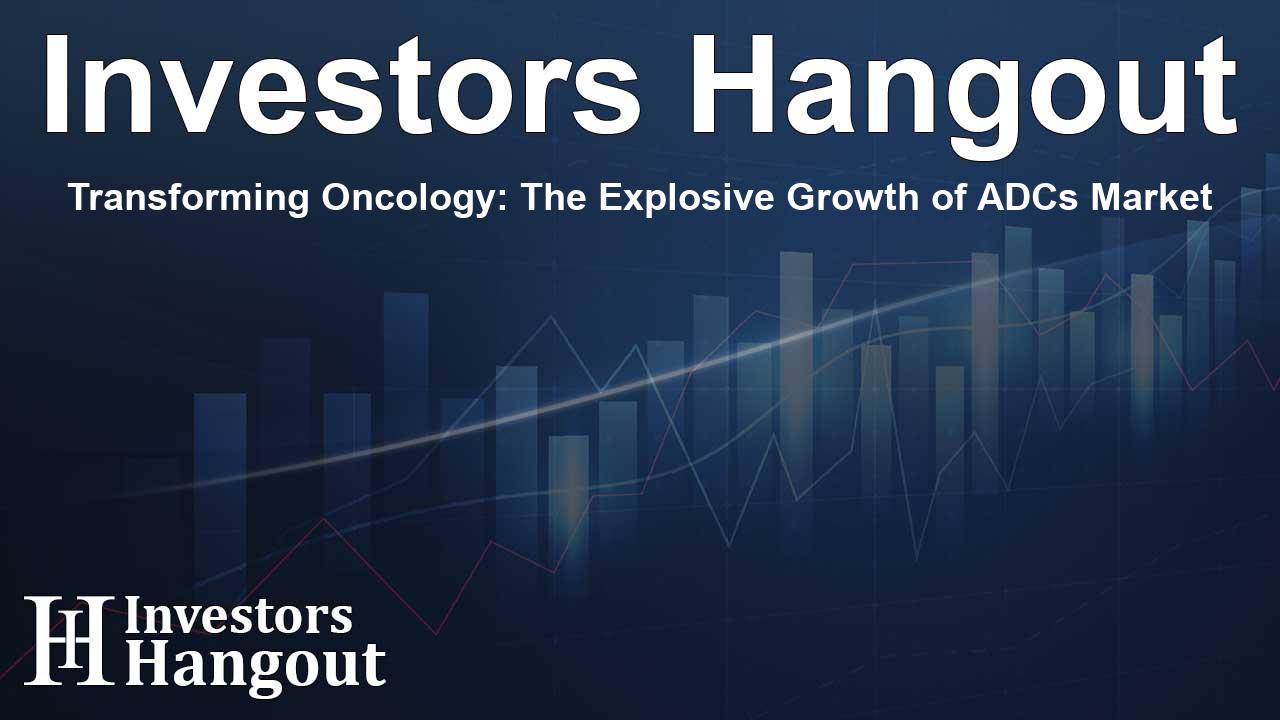Transforming Oncology: The Explosive Growth of ADCs Market

Exploring the Dynamic Growth of the Antibody-Drug Conjugates Market
The Antibody-Drug Conjugates (ADC) market is set to witness phenomenal growth, with projections suggesting an increase from around US $11.9 billion to beyond US $30.4 billion. This surge underscores a pivotal shift in cancer treatment strategies, transitioning from traditional chemotherapy to innovative, targeted therapies that deliver treatment directly to cancer cells.
Understanding the ADC Technology
ADCs are often described as 'guided missiles' in the realm of cancer therapy. They intertwine monoclonal antibodies with cytotoxic drugs through specialized linkers, allowing these targeted agents to strike tumor cells precisely while sparing healthy tissues. This innovative approach is not only transforming the oncology landscape but is also significantly enhancing treatment efficacy and safety standards.
Market Insights: A Growing Opportunity
As of 2024, advancements and market growth trends indicate that the ADC sector is gaining momentum particularly due to the introduction of next-generation therapies like Enhertu, Kadcyla, and Polivy. The rise in demand for these therapeutics is expected to enable the market to more than double by 2033, positioning ADCs as a central player in precision oncology.
Dissecting the Market Segmentation of ADCs
The ADC landscape can be analyzed through various dimensions, including product type, target type, technology type, application, and end-user. Each category reveals unique growth opportunities and dynamics that drive the market forward.
Product Type Considerations
Leading ADCs such as Kadcyla, Enhertu, Trodelvy, Padcev, Adcetris, and Polivy dominate market revenues. Among these, Enhertu has led the way with substantial sales figures, establishing benchmarks for HER2-targeting agents and reflecting the growing success of ADCs in elite cancer treatments.
Target Type Importance
The specificity of target types plays a crucial role in the performance of ADCs. The HER2 category continues to excel owing to its strong efficacy in treating breast and gastric cancers, while other targets like CD30 and TROP-2 are gaining traction in hematologic malignancies, marking the importance of innovative treatments in the industry.
Technological Advancements
The backbone of ADC innovation lies in linker and payload technologies. Cleavable linker systems, responsible for over 70% of the ADC market, facilitate precise drug delivery directly to tumor cells, minimizing harm to surrounding healthy tissue.
Applications of Antibody-Drug Conjugates
Breast cancer remains the leading area of clinical application for ADCs, contributing significantly to total revenues. However, blood cancers are rapidly becoming an important segment as well, driven by the recent approvals of ADC treatments like Adcetris and Polivy.
End-User Dynamics
ACDs are primarily administered in hospitals and specialty cancer centers given their complexity. As outpatient systems develop, patient access is expected to broaden, making specialty infusion centers critical in the distribution of these advanced treatments.
Regional Market Insights
In terms of geography, the United States commands the largest share of the ADC market, with a projected increase in value reflecting the rapid regulatory approvals and adaptations in payer support. Alongside, Japan and the Asia-Pacific region are emerging as significant growth vectors due to favorable conditions for ADC advancements.
Key Growth Drivers
- Increasing Cancer Incidence: The growing burden of various cancers expands the patient pool eligible for targeted therapies.
- Innovative Chemistry: Breakthroughs in antibody engineering and payload designs are enhancing therapeutic outcomes.
- Regulatory Advances: Fast-tracked approval processes are improving the time-to-market for novel ADC therapies.
- Pipelining Innovations: A growing number of ADC candidates in the pipeline is paving pathways for new treatments.
- Shifting Treatment Paradigms: Emerging trends towards precision therapy are driving oncologists to adopt targeting approaches as standard.
Challenges and Considerations for the Industry
While the outlook remains optimistic, several challenges face the ADC market:
- Cost of Treatment: The high expense associated with ADC therapies necessitates robust payer frameworks.
- Complex Manufacturing: Production challenges related to the precise nature of conjugation can limit scalability.
- Safety Concerns: The risks associated with systemic toxicity and immunogenicity must be diligently managed.
- Market Competition: Increasing competitive intensity from new ADC entrants fosters pressure on early market players.
Competitive Landscape Overview
The ADC sector is characterized by fierce competition among pharmaceutical leaders and their strategic allies. Major players include Pfizer Inc., AstraZeneca, Daiichi Sankyo, Gilead Sciences, and others which continue to innovate...
Strategic Considerations for Future Growth
The anticipated growth in the ADC market represents a substantial opportunity in the field of oncology. Companies are encouraged to invest in innovative technologies, expand production capabilities, and foster strategic partnerships to navigate through this evolving landscape.
Conclusion: The Future of ADCs
The ADC market's projected development signifies more than just financial growth, as it heralds a transformative phase in cancer care, marrying cutting-edge biology with advanced drug delivery systems.
Frequently Asked Questions
What is the projected growth of the ADC market?
The ADC market is expected to grow from approximately US $11.9 billion to over US $30 billion by 2033.
What are the main factors driving the demand for ADCs?
Key factors include an increasing cancer burden, advancements in conjugation technology, regulatory momentum, and ongoing pipeline expansion.
Which regions are seeing the fastest growth in the ADC market?
The U.S. continues to dominate the market, while Japan and the Asia-Pacific region are emerging rapidly due to favorable conditions.
What challenges does the ADC market face?
Challenges include high treatment costs, complex manufacturing processes, safety concerns, and competitive market dynamics.
Who are the key players in the ADC market?
Major players include Pfizer Inc., AstraZeneca, Daiichi Sankyo, Gilead Sciences, Roche, among others, all actively contributing to innovation.
About The Author
Contact Ryan Hughes privately here. Or send an email with ATTN: Ryan Hughes as the subject to contact@investorshangout.com.
About Investors Hangout
Investors Hangout is a leading online stock forum for financial discussion and learning, offering a wide range of free tools and resources. It draws in traders of all levels, who exchange market knowledge, investigate trading tactics, and keep an eye on industry developments in real time. Featuring financial articles, stock message boards, quotes, charts, company profiles, and live news updates. Through cooperative learning and a wealth of informational resources, it helps users from novices creating their first portfolios to experts honing their techniques. Join Investors Hangout today: https://investorshangout.com/
The content of this article is based on factual, publicly available information and does not represent legal, financial, or investment advice. Investors Hangout does not offer financial advice, and the author is not a licensed financial advisor. Consult a qualified advisor before making any financial or investment decisions based on this article. This article should not be considered advice to purchase, sell, or hold any securities or other investments. If any of the material provided here is inaccurate, please contact us for corrections.
